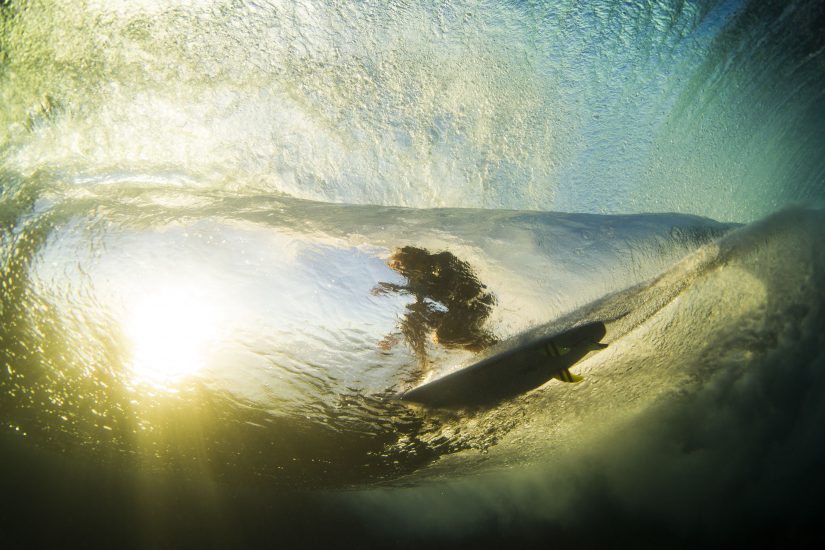Pro surfers have so much experience that their minds and bodies respond instinctively to the ocean's movements. They know what to do in every circumstance. That level of preparedness minimises the likelihood of injury while allowing them to make the most of their time on the water.
If you plan to tackle the waters around Fiji, it's advisable to master a few basic, but important, surfing moves before you arrive. We'll cover the most useful manoeuvres below.
Note that mastery requires more than watching a video. It takes practical application and regular practice. The following moves may look simple, but can pose a challenge for the novice. Even those with experience may need time before they can perform them smoothly.
The Duck Dive
Paddling out to catch waves takes a lot of time and effort. The challenge is to avoid getting caught in a break that will erode your momentum and sap your energy. The duck dive gives you a reliable way to do that. Diving under oncoming waves allows them to pass over you rather than slow you down.
If you ask ten surfers how to perform the duck dive, you'll hear ten variations of the same move. Here are the basics:
Step 1: When the wave is a few feet away, grab the rails of your surfboard and push downward. Your goal is to get the front (or nose) of your board under the surface.
Step 2: Shift your weight forward and lean into your board.
Step 3: As the wave starts to pass over you, use your foot to push downward on the tail of your surfboard. The entire thing needs to be underwater.
Step 4: Lay your body flat against your surfboard.
Step 5: Point the nose of it toward the surface to emerge and resume your paddling.
It's more difficult than it seems. Practice the manoeuvre – even if only in flat water – until you can perform it without thinking.
The Turtle Roll
A turtle roll has the same purpose as a duck dive. It's designed to help you get your surfboard under oncoming waves. The difference is that a turtle roll is used when you're on a longboard.
Shortboards are suitable for high waves, such as those found at Cloudbreak, Restaurants, and other popular Fiji surf spots. The boards are relatively easy to submerge. Their short stature lacks the buoyancy of their longer counterparts.
Longboards are suitable for smaller waves, like those found at Swimming Pools and Sigatoka. They have greater mass, which makes it easier to catch waves. The downside is that a longboard's mass is more difficult to submerge.
Enter the turtle roll.
As a wave approaches, grab your longboard and roll with it so that you are positioned underneath it. Then, place your hands on the rails above the middle, and pull it downward to submerge it.
The key is to get the nose of your board under the surface first. Doing so will make it easier to submerge the rest.
After the wave has passed over you, roll back to your original position.
One word of caution: don't wrap your legs around your board while you're underneath it. It's a natural instinct to prevent losing your grip. The problem is, it will prevent your body from adequately anchoring it and pulling it under the water's surface.
Also, expect to lose a bit of ground when you perform the turtle roll. It's unavoidable due to the longboard's mass. But you'll lose far more ground if you're unable to get under the wave.
How To Gain Speed
The third manoeuvre to master is the ability to gain speed. Without it, you won't be able to fully leverage the intensity of the waves. You may be able to paddle, duck dive, and pop up like a pro, but it will all be for nothing if you can't get enough speed.
First, learn how to pump your board. Pumping allows you to take advantage of the wave's energy. As you move up and down its face, you'll gain momentum. An effective pumping technique will help you generate speed whenever you need it.
Second, leverage your body weight. As you ride down the face of a wave, shift your weight forward, applying it to the front of your surfboard. Then, when you near the bottom, shift your weight toward the back of your board. Doing so will keep its nose high, allowing you to come out of the drop without having lost much speed.
Third, a majority of the wave's energy is found where the face is at its sheerest point. Learn to use that section to your advantage.
Speed is critical if you're surfing smaller waves. There's not enough power in them to propel you forward. Larger waves can often produce the momentum you need with little effort on your part. All you need to do is maintain a good position.
Being prepared is crucial when you surf in Fiji. Learn the 3 manoeuvres outlined above to ensure you get the most out of your visit. As with any surfing skill, the key to mastering each of them is practice.

